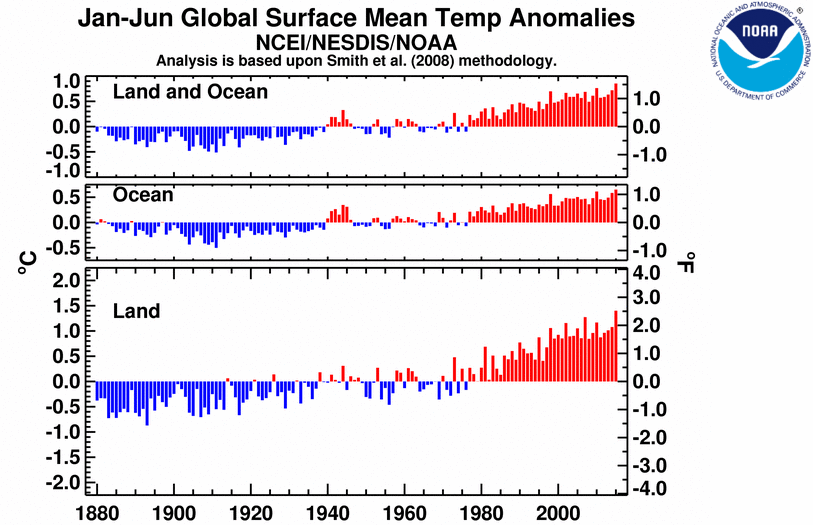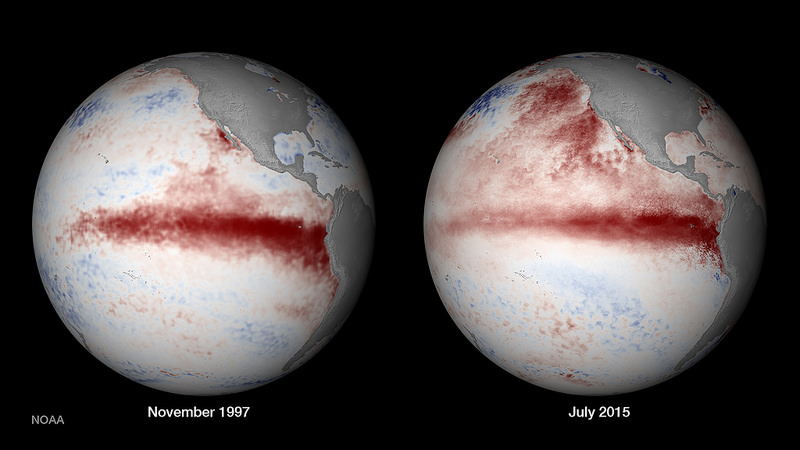
22nd July 2015 Global warming update – July 2015 The latest global analysis of temperature data from NOAA shows that the first half of 2015 was the hottest such period on record, at 0.85°C (1.53°F) above the 20th century average, surpassing the previous record set in 2010 by 0.09°C (0.16°F).
The National Oceanic and Atmospheric Administration (NOAA) has released its latest Global Analysis of temperature and climate data. In addition to the warmest six months on record, a number of records were broken for individual months in the first half of 2015 – the Earth experienced its hottest ever February, March, May and June. These warm months, combined with the previous six months, make July 2014 to June 2015 the warmest 12-month period since records began 136 years ago. Large areas of Earth's land surfaces witnessed higher than average temperatures in June. There was record warmth across the western United States, parts of northern South America, several regions in central to western Africa, central Asia around and to the east of the Caspian Sea, and parts of southeastern Asia. Western Greenland and parts of India and China were cooler than average, and northern Pakistan was much cooler than average. For the oceans, the June global sea surface temperature was 0.74°C (1.33°F) above the 20th century average of 16.4°C (61.5°F), the highest for June on record, surpassing the previous record set last year by 0.06°C (0.11°F). This also tied with September 2014 as the highest monthly departure from average for any month for the globally-averaged sea surface temperature. Record warmth was observed across the northeastern and equatorial Pacific as well as parts of the equatorial and southern Indian Ocean, various regions of both the North and South Atlantic Ocean, and the Barents Sea to the northeast of Scandinavia. Only part of the North Atlantic between Greenland and the United Kingdom was much cooler than average. 2015 looks set to become the hottest year ever, thanks to the ongoing El Niño, which is clearly seen in the image below and has a strong (80%) chance of persisting into early spring 2016. For comparison, the famous "super El Niño" of 1997-1998 is shown on the left.
Comments »
|








